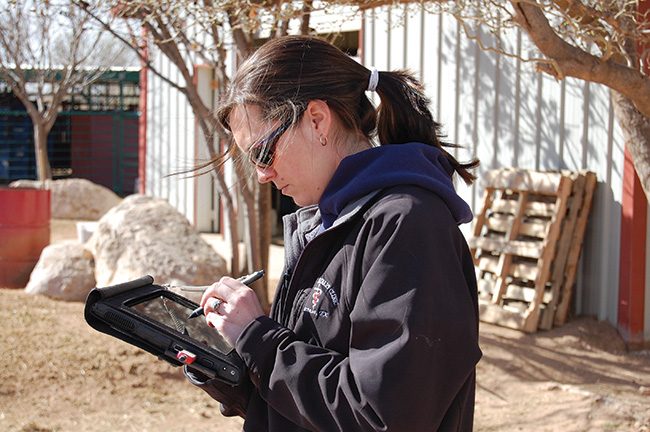American Farriers Journal
American Farriers Journal is the “hands-on” magazine for professional farriers, equine veterinarians and horse care product and service buyers.

Dr. Kacey Tweeten-King of Brock Veterinary Clinic in Lamesa, Texas, readies the Lameness Locator for an evaluation of a perfect candidate for the machine. The mare’s lameness was mild, and results showed problems in two limbs.
Performing lameness examinations has never been an exact science. Even the best equine veterinarians do not always agree on the cause or even the location of difficult lamenesses. Now, a relatively new piece of veterinary technology is taking the subjectivity out of lameness exams.
The Lameness Locator was nearly 20 years in the making, but it is now gaining traction and popularity across the United States. It is not advertised as a replacement for good veterinary skills and knowledge, but as another tool for veterinarians, and perhaps soon for horse owners and even farriers.
The machine is particularly useful for identifying subtle, multiple and compensatory lamenesses, and assessing the effectiveness of nerve and joint blocks.
Kevin Keegan, an equine veterinarian and professor at University of Missouri’s College of Veterinary Medicine, set the wheels in motion in the early ’90s with a research project on identifying lameness through motion analysis. Over the years, and with the help of co-inventors P. Frank Pai and Yoshiharu Yonezawa, the Lameness Locator was born. The first unit was sold late in 2009, and the steadily rising number of machines in use today is over 50, 12 of which are in vet schools.
Marketed by Equinosis, Keegan’s limited liability corporation headquartered in Columbia, Mo., the Lameness Locator…